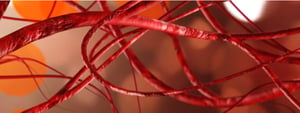Researchers at the Francis Crick Institute in London have uncovered the (efficient and complex) way that cells “decide” together how to build new blood vessels.
There are approximately 30 trillion cells in our bodies, and although they are independent of one another (and although they do not possess an individual “brain”), they have a kind of collective intelligence. In certain circumstances this intelligence is activated so that we can make some important decisions in the best possible way, for example how and where to build new blood vessels.
This ability has been studied for some time, but many aspects of the mechanisms of cellular “intelligence” are still to be clarified. The mechanisms are reminiscent of ants in a large anthill: each ant has a certain task, but collectively they “know” what they have to do to contribute to the success of the whole system.
Research conducted at the Francis Crick Institute in London has now shed new light on the mechanisms that drive particular types of cells, called undifferentiated endothelial cells (basically stem cells), to work together to build new veins and arteries.
“These cells,” write the British researchers in the scientific journal Philosophical Transaction of the Royal Society B, “coordinate their behaviour precisely and rapidly, collectively deciding which cells should take on specific jobs and ensuring that not too many or too few cells are fulfilling each role”.
So how does cellular intelligence wo rks?
When it is time to create a new blood vessel, the undifferentiated cells extend long “fingers” (extroversions called filopodia) into the surrounding microenvironment and explore it. It is like, the researchers explain, when someone enters a dark and unfamiliar room and spontaneously reaches forward with their hands to find the light switch. The researchers call this method active perception (exploring the surroundings to make a better decision). The cell that manages to gather the most information from its surroundings is destined to become the leader. It will be the one to carry the construction of the new blood vessel forward.
Katie Bentley, senior author of the study explains, ‘In biology textbooks these actions are often set out step by step in a certain order. Molecule A binds to receptor B and causes movement C… In reality, steps happen alongside each other rather than consecutively, as cells simultaneously move about while deciding how to form new tissue. This is something we usually associate with higher-organisms… Discovering that all this also happens to individual cells could enable us to unlock new therapies and treatments in the future based on these processes”.
We shall remember that the formation of new blood vessels is crucial for the development and repair of healthy tissue, and is poorly regulated in many diseases – especially cancer.
Using a complex series of computer simulations and studies on zebra fish embryos, the researchers discovered that filopodia begin to form on the surface of cells before the group decides which one will be the leader. If these extroversions are blocked, as the researchers tried to do in several experiments, the cells can no longer identify their leader and the formation of new blood vessels becomes less efficient and dense.
“If tip cell selection goes wrong or is slowed down”, says Bahti Zakirov, author of the study and researcher at King’s College London, “this can lead to poorly branched or abnormal vessel networks, limiting blood flow. This in turn, can contribute to diseases such as cancer, retinopathy and HHT – hereditary haemorrhagic telangiectasia. A greater understanding of how to speed up or alter the branching tempo of blood vessels could therefore lead to new therapies which can regulate blood vessel density. This could also help in the creation of artificial organs or tissues as these also need dense blood vessel networks”.

